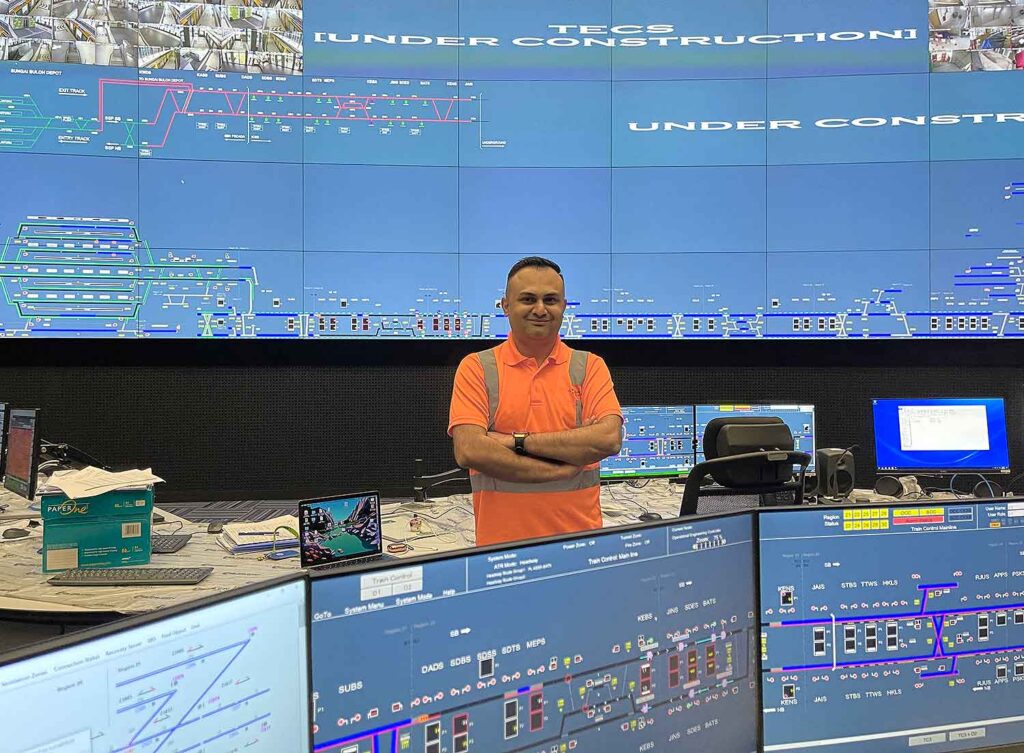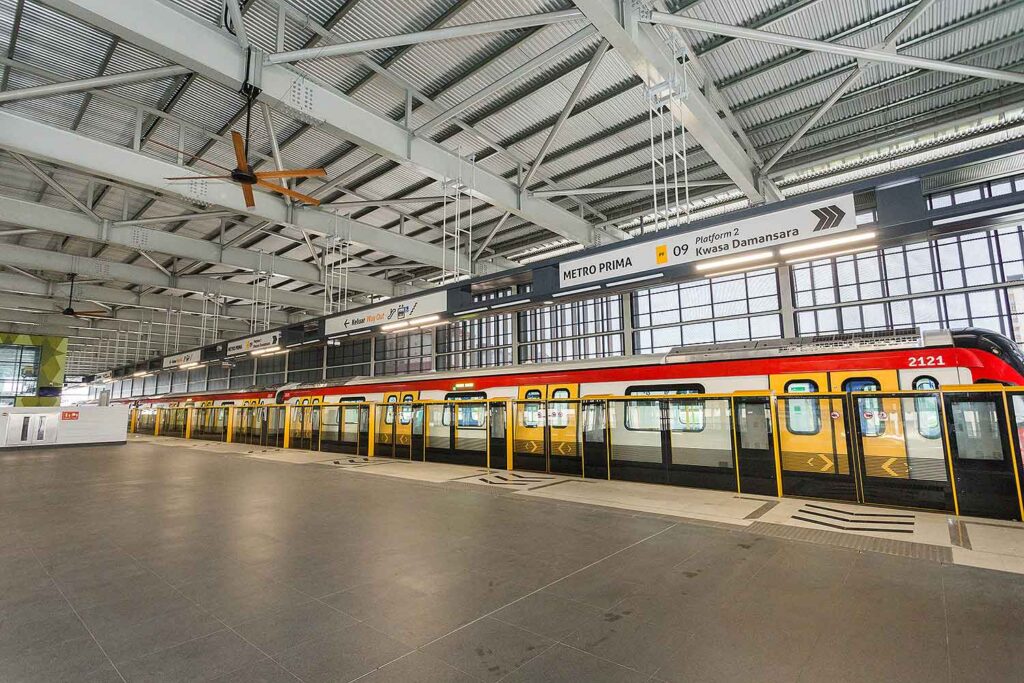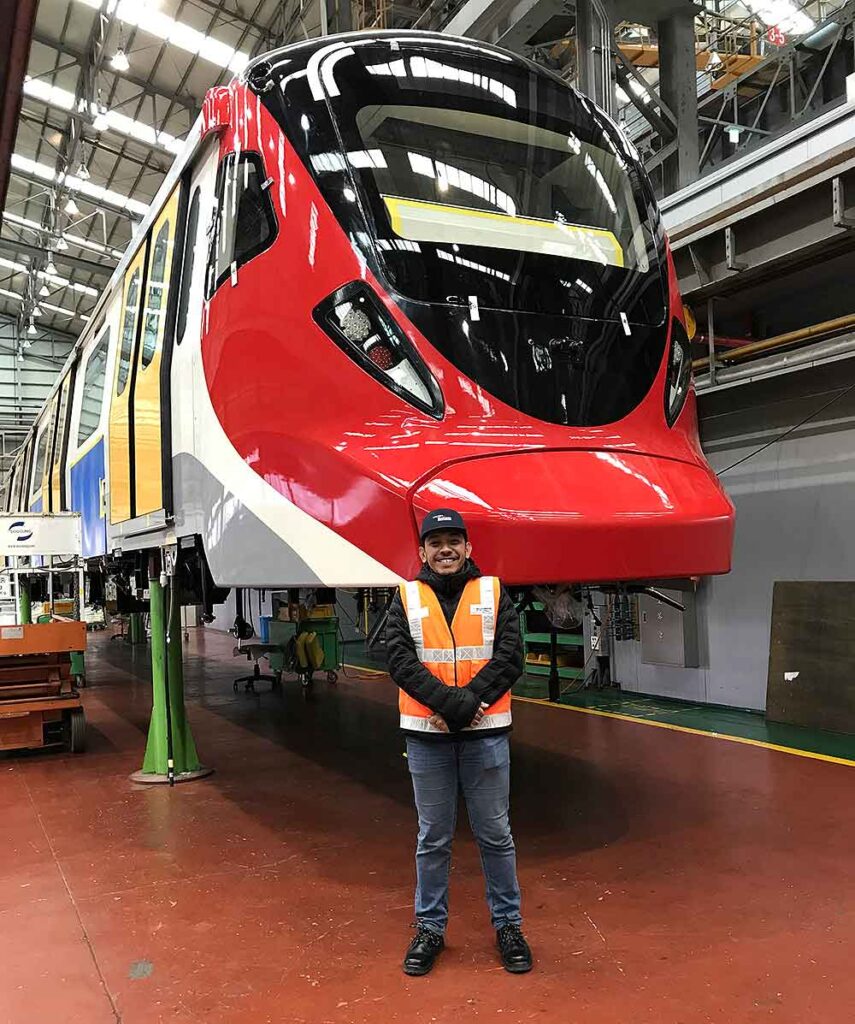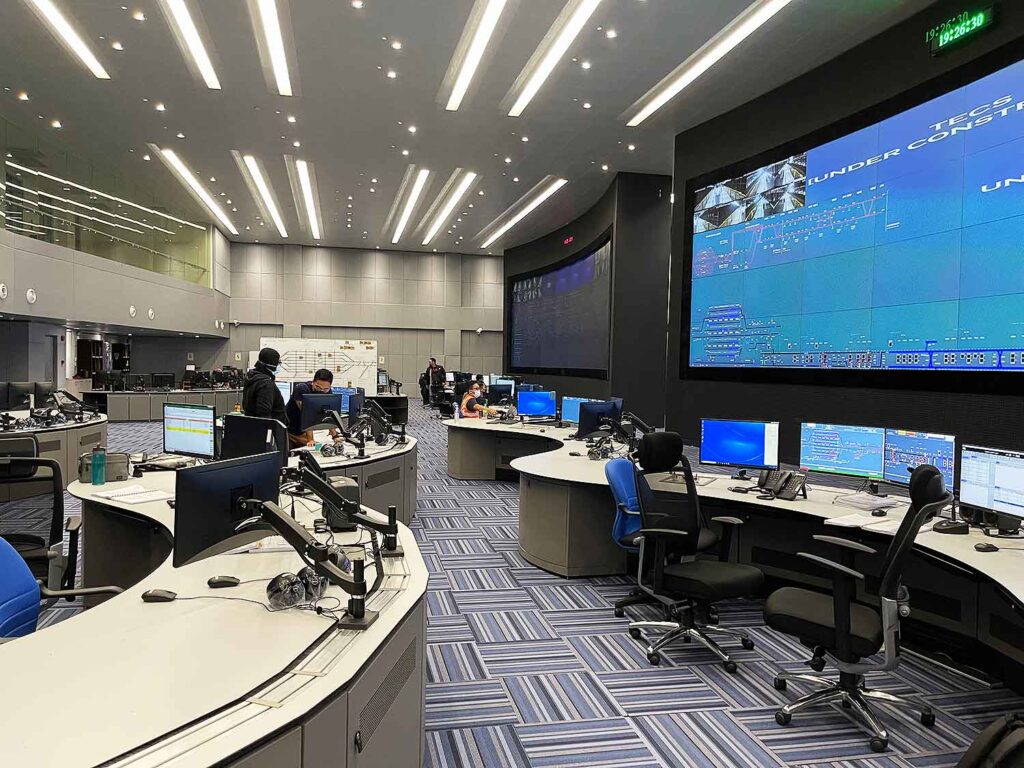The Battles Conquered for a Seamless Ridership Experience
Picture this – you step onto the platform of an MRT station, and you’re sitting down waiting as the display board indicates another 3 minutes until the next train arrives. The train arrives precisely on time, decelerating safely until it comes to a complete halt, where the train doors align perfectly with the screen doors on the platform. Both doors open simultaneously, and you enter. After the door closes behind you, the train begins its departure with an announcement playing in the background, notifying you of the next platform destination.
This seamless experience, while many everyday commuters may not notice, is meticulously crafted and perfected by the backbone of the automated rail network – the Integrated Railway Systems. To prepare these seemingly simple sets of events, we rely on advanced technical and operational systems to serve multiple purposes – from efficient communication, operations control, and signalling to emergency interventions.
TESTING, COMMISSIONING AND MIGRATION
We spoke to Jayee ‘Jay’ Sreetharan, the Senior Manager in Testing, Commissioning & Migration, to better understand this. His scope of work includes managing the overall testing and commissioning of the MRT Putrajaya Railway Systems and Electric Trains, ensuring they meet and pass the necessary requirements for reliability, safety and operation of the railway.

Jay shared that the operation of the Railways Systems including the Trains requires a complex network of systems and subsystems that work together to ensure a smooth operation of the service. Some of these systems include the signalling system, communication, power supply and distribution system, monitoring system as well as the train set itself.
A pivotal part of the project under Jay’s supervision is the rigorous testing phase. An extensive range of tests is involved in this process, such as the Partial Acceptance Test, Systems Acceptance Test and the Systems Integration Test.

Once all these trains have passed the necessary testing prerequisites, they then move on to the Fault Free Run (FFR) testing. The FFR testing is a requirement by the Land Public Transport Agency (APAD). It is the most challenging phase of testing, which involves completing fault-free testing over a set mileage. The first train must complete a 4,000 km marathon without encountering any major faults, with subsequent trains running a 2,000 km marathon. The real challenge lies in the fact that when a major fault occurs, the distance will have to be reset to zero, and the train is required to restart the FFR testing.
While experiencing obstacles is a common theme in the testing phase, the COVID-19 outbreak and lockdown have surely exacerbated the effects, marking it as the biggest challenge that Jay and his team have faced so far. The pandemic has made communication significantly challenging due to social distancing restrictions eradicating many face-to-face engagements and collaborations. Jay’s outlook to overcoming these hurdles was to employ a gentler approach to enforcing COVID-19 guidelines. Rather than using authoritarian force, he chose to have open dialogues with his teammates and contractors to establish a mutual understanding of why these restrictions were in place in the hopes that they might abide by it on their own, which fortunately worked.
Like many others who have participated in the construction of the MRT Putrajaya Line, Jay finds pride in being part of a project that contributes to the nation and impacts other people’s lives. With a positive outlook on the future of infrastructure projects in Malaysia, he hopes that the KVMRT projects would pave the way for future developments across the country, beyond the Klang Valley.
SIGNALLING
As a Package Manager, Mohd Syamim’s job scope includes successfully delivering the signalling and train control system for the MRT Putrajaya Line. Syamim shared with us what exactly this system does and how it fits into the larger Project.

The signalling system governs how a train operates safely along the track from one point to another, while executing actions it is programmed to do. For example, the daily routine of the train from the moment it starts up, goes to the mainline, runs its service, and goes back to the depot at the end of the day is all determined by the signalling system.
The three major systems in signalling are:
- Trackside system; signalling equipment installed on the track that relays information to the automatic train supervision (ATS)
- Onboard system; signalling computer on the train that relays information to the automatic train supervision (ATS)
- Automatic train supervision (ATS) system; governs both trackside and onboard systems for the control centre to supervise
The systems interconnect with the trackside system sending signals to the onboard system via radio communication. This governs the actions of the train such as where it stops, how it launches, its speed and more. All this information then gets relayed back to the ATS system, considered to be the control centre. All information exchange is done in a safety critical manner as to ensure the safety of all passengers and operators alike.

From the control centre, the operator can then choose to select a train and control its movement from one destination to another. An example of this application coming into play is when we require trains to go faster or slower, in order to reach platforms in a timely order. All of these movements involve signalling interlocking, which is the core principle of signalling where it prevents collisions between one train and another. The Signalling system interfaces with other systems such as trains and platform gates in order to deliver a complete driverless solution.
It is evident that his passion and dedication to the project and his role flourished throughout his work. This is due to the many opportunities he’s had to work in different places around the world, on different projects with different people. Deriving joy from the positive impact the MRT Kajang Line has had on the nation’s lives, he looks forward to the development of the MRT Circle Line so that his young team and other local talents can develop even further and become experts and leaders in the field.

